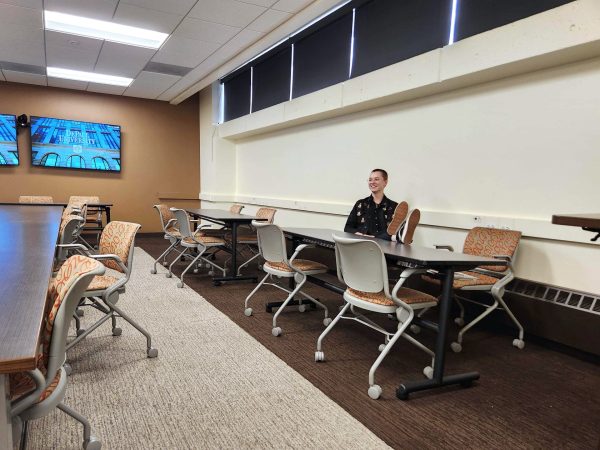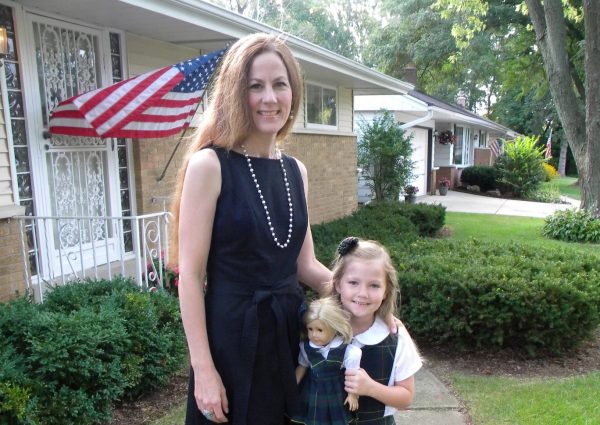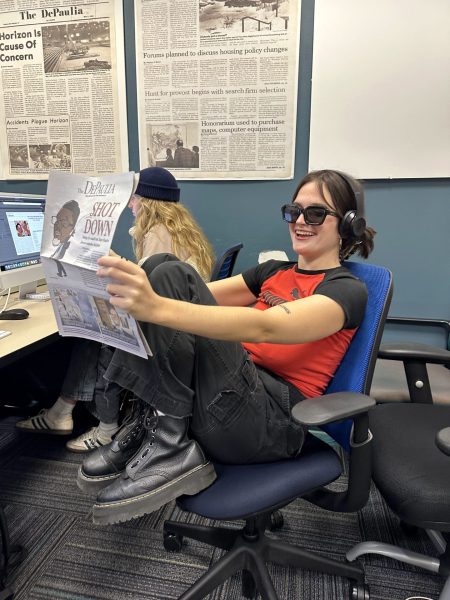Opinion: CTA promises safety, does it deliver?
Credit: Alison Schultz
The Monroe red line CTA station. DePaul University campuses are directly off of the Fullerton stop in Lincoln Park and the Jackson stop in the Loop.
According to the CTA, everyone deserves the right to a safe and comfortable travel environment and experience. But with the current trend in CTA crime, not everyone is receiving one.
On Jan. 13, a 29-year-old man was standing on the platform in the 200 block of South State Street around 9:15 p.m., as two unidentified individuals held him at knifepoint. After surrendering his backpack and watch, the robbers stabbed him in the back of the ear. As the robbers fled the scene, two other people were stabbed in the process. Just hours later, on the platform at the Blue Line station at Washington in the first block of North Dearborn Street, another man was stabbed with a pair of scissors. No arrests have been made.
In 2021 alone, there were 216 attacks on buses and 360 on trains, totalling 567 violent crimes including murders, aggravated assaults, non-fatal shootings, robberies and sexual assaults on the CTA. Consequently, violent crime on the CTA has hit a six-year high. Mass Transit Unit Deputy Chief Matthew Cline said that getting those numbers down is a goal and priority city leaders share.
The CTA security department heavily depends on roughly 32,000 cameras to aid in the fight against crime. Through these live camera feeds from every rail station and access to recorded videos, the Office of Emergency Management (OEMC) and the Chicago Police Department’s Public Transit Unit have direct access to what happens on the tracks. While video technology may be important, it seems not to be a blanket solution, as the crime on the CTA has only increased.
The rise in crimes is concerning for members of the DePaul community, like sociology professor Roberta Garner, because it makes the city “less livable,” especially for people who solely rely on public transportation to make their way around.
“That includes many young people and old people, as well as people with limited financial means,” Garner said. “As for DePaul, it is important for staff, administrators and faculty to be open to conversations with students and to suggest realistic ways of coping with this.”
Undoubtedly, reducing crime will cost money.
“A lot of people do not want to spend it on anything in the public sector,” Garner said. “‘Lower taxes’ is their mantra. Training police in new ways of policing, creating housing for homeless and disturbed people so that they don’t sleep on trains, hiring security guards [are] all measures to build an attractive, safe, modern public transportation system, and some political forces will block that, preferring to let public transportation deteriorate.”
In New York City, transit officials are trying to lure back riders by requiring police officers to conduct frequent sweeps of the subway system and work with homeless outreach teams to reassure current riders. New York City mayor and former police officer Eric Adams has vowed to put an end to gun violence through reinstating the controversial plainclothes police unit, a special street unit dressed as everyday civilians. It was dismantled in 2020 after controversy of aggressive policing and discrimination against people of color.
Sociology professor Noel Barker advises students and faculty that random violence is not necessarily avoided by driving your own car. Vehicular hijacking in Chicago has already reached 249 total victimizations this year. Compared to 2019, all violent crime victimizations are up almost 11 percent.
Mayor Lori Lightfoot ties the upsurge in carjackings to remote teaching for carjackings conducted by juveniles. At a news conference to promote the progress of a specialized carjacking task force, Lightfoot said at least half of those arrested in recent carjackings are under 18 years old and drew a “direct correlation to the start of remote learning.”
Whenever you bring together people in time and space, you have the potential for crime. Crime hot spots along public transportation is not a new issue, according to Director and Associate Professor of Criminology Megan Alderden.
“The question is whether we can use a combination of strategies to suppress crime as much as possible with the goal of using less intensive and less costly, but effective solutions whenever possible before adding officers,” Alderden said.
The ASU Center for Problem-Oriented Policing believes that situational crime prevention provides a framework for intervention and claims there are five main ways in which we can modify crime. First, increase the effort the offender must give to carry out the crime. Second, increase the risk the offender must face upon completing the crime. Third, reduce the rewards or benefits the offender expects to acquire from the crime. Fourth, remove excuses that offenders may use to justify their actions. Last but not least, avoid provocations that may incite offenders into criminal acts.
“The reality is that even after implementing these strategies, some sites may still require additional officer presence,” Alderden said. “Again, that should involve an in-depth analysis of the problem location. I think the one caution here is that not all people may feel safer having more police around. So that type of strategy needs to be done thoughtfully and ideally with community input.”
Sophomore Olivia Sullivan shared that she chose DePaul to have a full city college experience, so she views taking the train to class as a part of that.
“I do find it concerning because there is a lack of accountability,” Sullivan said. “It scares me a bit that if something did happen where I felt unsafe, there is nothing I can really do to stop it from happening in the moment.”
When riding the CTA, there are several precautions one can take to enable a safe ride.
As a general policy, Alderden encouraged only using public transportation during times when you expect large quantities of people to be using it as well.
“Pay attention; people are more vulnerable when they are distracted,” Alderden said. “This means not engaging in activities that prevent you from being fully aware of what is going on. Create a plan for what to do if someone does try to victimize you. The key is to have thought it through in advance and to select the plan that is the safest.”







